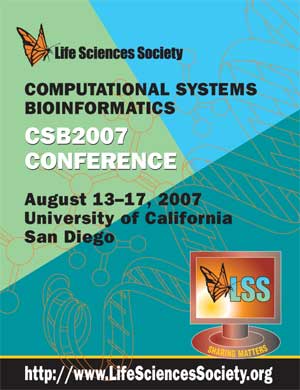Reconcilation with Non-Binary Species Trees
Benjamin Vernot, Maureen Stolzer, Aiton Goldman, Dannie Durand*
Departments of Biological Sciences and Computer Science, Carnegie Mellon University, Pittsburgh, Pennsylvania 15213, USA. durand@cs.cmu.edu
Proc LSS Comput Syst Bioinform Conf. August, 2007. Vol. 6, p. 441-452. Full-Text PDF
*To whom correspondence should be addressed.

Reconciliation is the process of resolving disagreement between gene and species trees, by invoking gene duplications and losses to explain topological incongruence. The resulting inferred duplication histories are a valuable source of information for a broad range of biological applications, including ortholog identification, estimating gene duplication times, and rooting and correcting gene trees. Reconciliation for binary trees is a tractable and well studied problem. However, a striking proportion of species trees are non-binary. For example, 64% of branch points in the NCBI taxonomy have three or more children. When applied to non-binary species trees, current algorithms overestimate the number of duplications because they cannot distinguish between duplication and deep coalescence. We present the first formal algorithm for reconciling binary gene trees with non-binary species trees under a duplication-loss parsimony model. Using a space efficient mapping from gene to species tree, our algorithm infers the minimum number of duplications and losses in O(|V
[CSB2007 Conference Home Page]....[CSB2007 Online Proceedings]....[Life Sciences Society Home Page]